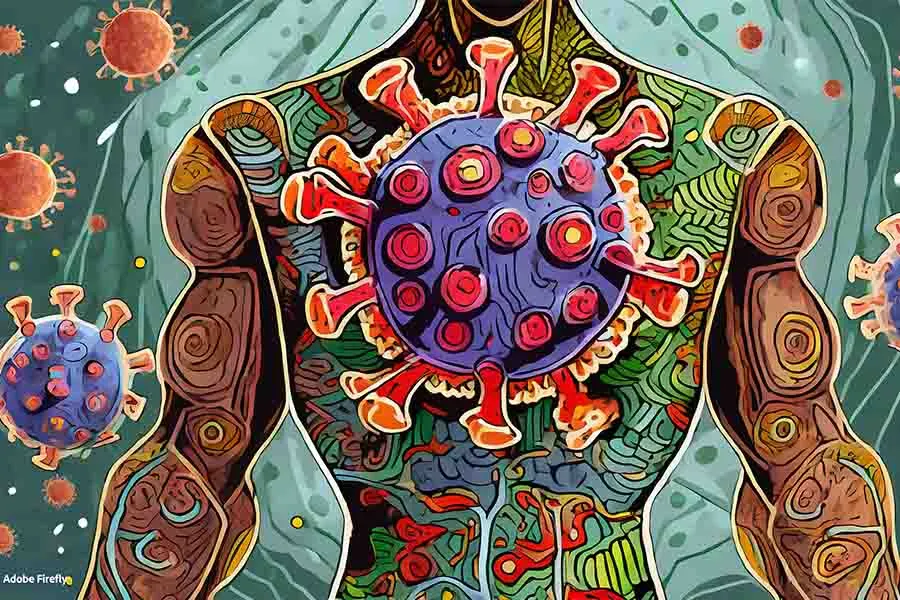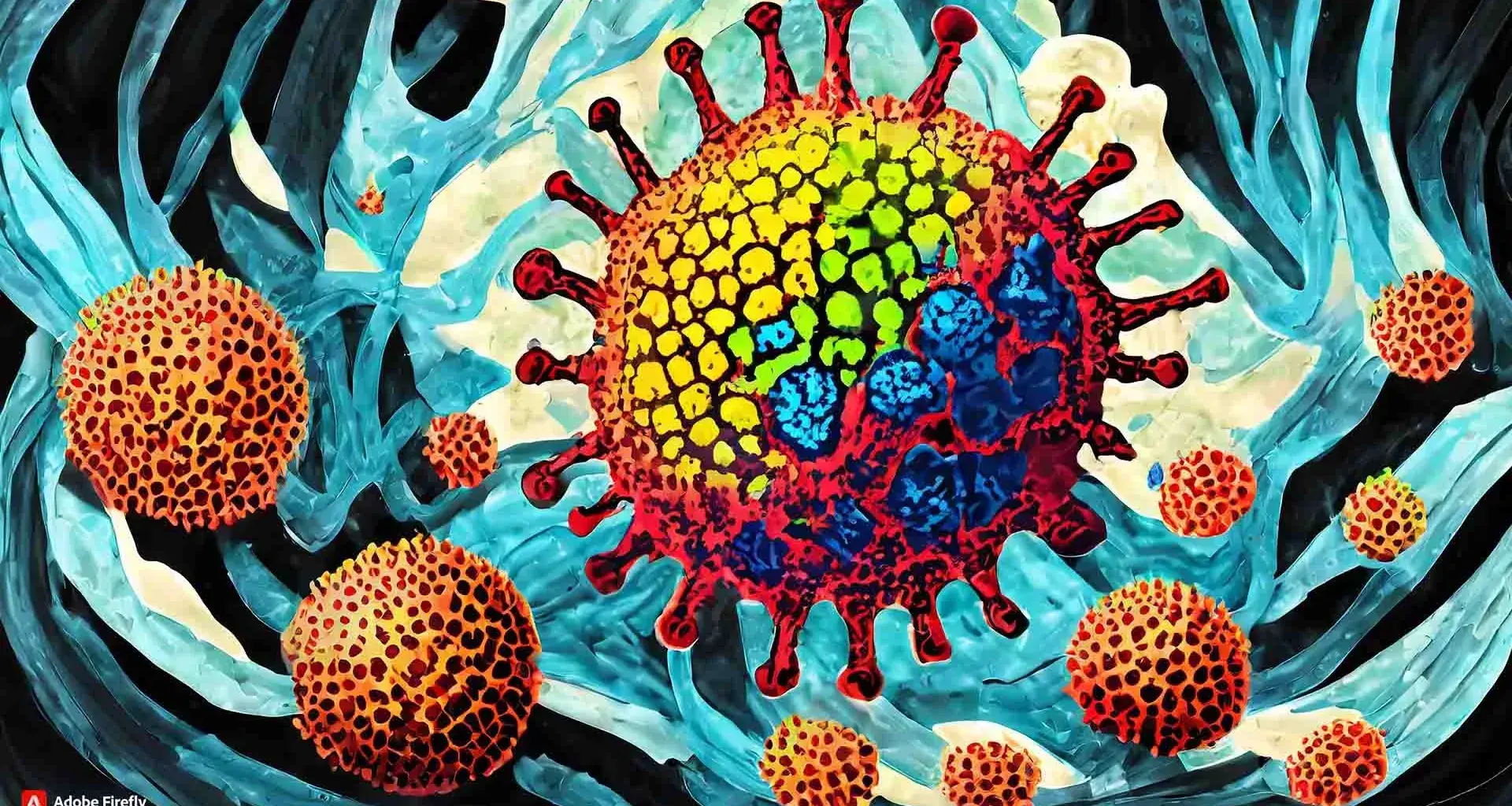What should we know about the new COVID-19 subvariant JN.1 Pirola?
Teresa Ramírez, an infectious disease specialist from TecSalud, explains what is currently known about this new mutation of the SARS-CoV-2 virus.
“So far, scientific evidence suggests that it is more rapidly transmitted but does not appear to be associated with an increase in the number of severe cases.”
Although it is currently classified as a variant of interest (VOI), the global public health risk is evaluated as low by the World Health Organization (WHO).

What are the symptoms of JN.1 Pirola?
At the moment, no categorical symptoms have been specified by the WHO, but the following are the most frequently reported:
- Fever
- Chills
- Sore throat
Other less common symptoms are:
- Muscular pain and heavy arms or legs
- Severe fatigue or exhaustion
- Severe runny or stuffy nose, or sneezing
- Headache
- Sore eyes
- Dizziness
- New and persistent coughing
- Tightness or pain in the chest
- Difficulty breathing
- Snoring
- Numbness or tingling
- Loss of appetite, nausea, vomiting, abdominal pain, or diarrhea
- Loss or change of sense of taste and/or smell
- Difficulty sleeping
The infectious disease specialist clarified that the presence of these symptoms does not guarantee the patient has COVID-19, so she recommended taking a screening test to be sure.
So far, JN.1 Pirola does not represent a high risk
JN.1 contains spike protein mutations of the virus, which is key to SARS-CoV-2 invading, taking control of, and replicating human host cells.
This is why it is associated with a higher risk of reinfection than other variants. However, it is not associated with an increase in the number of severe cases.
In fact, the WHO classifies it as a variant of interest (VOI) of low risk to global public health.
However, the TecSalud specialist predicts that, with the onset of winter, JN.1 could increase the burden of respiratory infections in many countries.

How did this subvariant emerge?
The JN.1 Pirola mutation was first detected in Luxembourg and the United States in late August 2023.
Since then, it has spread throughout Europe and was detected in China in mid-December.
It was first detected in Mexico City on December 11, 2023.
The health professional explains that, like all viruses, SARS-CoV-2 mutates over time to give it a better chance of survival.
According to the WHO, JN.1 was previously classified as a variant of interest (VOI) as part of BA.2.86 sublineages.
However, in recent weeks, JN.1 occurrences have been reported in several countries, and its prevalence has grown quickly around the world making it the most common of BA.2.86 sub-lineages.
Due to its rapidly increasing spread, the WHO classified the variant JN.1 as a separate VOI from the parent BA.2.86 lineage.
What does variant of interest mean?
According to the CDC, variants of interest have the following characteristics:
- Antibodies generated to combat a previous infection or vaccination are less effective.
- They have a lower effective response to approved treatments or diagnostic tests.
- An expected increase in disease transmissibility.

Do updated vaccines provide protection from JN.1?
The TecSalud infectious disease specialist explains that the vaccines sold in Mexico are effective against the current dominant strain (JN.1) because it is a subvariant of Omicron.
“The data we have show that these vaccines do, in fact, protect us from JN.1.”
Although the Pfizer and Moderna vaccines were made for Omicron XBB.1.5 and not JN.1, they are the most up-to-date products currently available.
According to the WHO, “Current vaccines continue to protect against severe disease and death from JN.1 and other circulating variants of SAR-CoV-2, the virus that causes COVID-19.”
Ramírez considers that the Abdalá, Sputnik, and Patria vaccines in Mexico’s National Vaccination Plan also provide a relative degree of protection against this variant.
How can you distinguish influenza from COVID?
Gloria Aguirre, a TecSalud infectious disease specialist, explains that influenza symptoms usually appear suddenly from one day to the next along with a high fever of 38-39 degrees.
“It attacks your general wellbeing and causes aches and pains all over your body, and in your joints and muscles. It may cause nasal congestion. Coughing is not quite as common.
COVID-19 usually comes on more gradually.
“(With COVID-19) one day it’s a sore throat and the next congestion. And the following day a feeling of weakness comes over you, and so on.”
She said that fever is one way to tell the diseases apart.
“Fever tends to be more common with influenza and it is more severe. Fatigue is also much more extreme. People complain a lot about feeling aches and pains.”
General recommendations
WHO recommends keeping up to date with vaccinations and taking other measures to prevent serious infections and diseases:
- Have a complete vaccination plan (with updated doses).
- Wear a mask when in crowded, enclosed, or poorly ventilated areas.
- Keep as a safe distance from others as feasible.
- Clean your hands regularly.
- And get tested if you have symptoms, or if you might have been exposed to someone with COVID-19 or a cold.
- Stay home from five to seven days if you are sick until symptoms disappear.
Information supplied by José Longino Torres.
READ ALSO:





